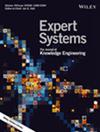GRDATFusion:用于云计算和雾计算中智慧城市安防系统的梯度残差密集和注意力变换器红外与可见光图像融合网络
IF 3
4区 计算机科学
Q2 COMPUTER SCIENCE, ARTIFICIAL INTELLIGENCE
引用次数: 0
摘要
红外与可见光融合技术在云计算和雾计算的智慧城市中占有举足轻重的地位,尤其是在安防系统中。通过融合红外和可见光图像信息,该技术可提高目标识别、跟踪和监控精度,从而增强整个系统的安全性。然而,现有的基于深度学习的方法在很大程度上依赖卷积运算,而卷积运算擅长提取局部特征,但其感受野有限,阻碍了全局信息的捕捉。为了克服这一困难,我们引入了 GRDATFusion,这是一种新型端到端网络,由三个关键模块组成:变换器、梯度残差密集和注意力残差。梯度残差密集模块提取局部互补特征,利用密集型网络保留可能丢失的信息。注意力残差模块专注于关键的输入图像细节,而转换器模块则捕捉全局信息并建立长距离依赖关系模型。公共数据集上的实验表明,GRDATFusion 在定性和定量评估方面都优于最先进的算法。消融研究验证了我们方法的优势,而效率比较则证明了其计算效率。因此,我们的方法能使智慧城市的安防系统延迟更短,满足实时性要求。本文章由计算机程序翻译,如有差异,请以英文原文为准。
GRDATFusion: A gradient residual dense and attention transformer infrared and visible image fusion network for smart city security systems in cloud and fog computing
The infrared and visible fusion technology holds a pivotal position in smart city for cloud and fog computing, particularly in security system. By fusing infrared and visible image information, this technology enhances target identification, tracking and monitoring precision, bolstering overall system security. However, existing deep learning‐based methods rely heavily on convolutional operations, which excel at extracting local features but have limited receptive fields, hampering global information capture. To overcome this difficulty, we introduce GRDATFusion, a novel end‐to‐end network comprising three key modules: transformer, gradient residual dense and attention residual. The gradient residual dense module extracts local complementary features, leveraging a dense‐shaped network to retain potentially lost information. The attention residual module focuses on crucial input image details, while the transformer module captures global information and models long‐range dependencies. Experiments on public datasets show that GRDATFusion outperforms state‐of‐the‐art algorithms in qualitative and quantitative assessments. Ablation studies validate our approach's advantages, and efficiency comparisons demonstrate its computational efficiency. Therefore, our method makes the security systems in smart city with shorter delay and satisfies the real‐time requirement.
求助全文
通过发布文献求助,成功后即可免费获取论文全文。
去求助
来源期刊

Expert Systems
工程技术-计算机:理论方法
CiteScore
7.40
自引率
6.10%
发文量
266
审稿时长
24 months
期刊介绍:
Expert Systems: The Journal of Knowledge Engineering publishes papers dealing with all aspects of knowledge engineering, including individual methods and techniques in knowledge acquisition and representation, and their application in the construction of systems – including expert systems – based thereon. Detailed scientific evaluation is an essential part of any paper.
As well as traditional application areas, such as Software and Requirements Engineering, Human-Computer Interaction, and Artificial Intelligence, we are aiming at the new and growing markets for these technologies, such as Business, Economy, Market Research, and Medical and Health Care. The shift towards this new focus will be marked by a series of special issues covering hot and emergent topics.
 求助内容:
求助内容: 应助结果提醒方式:
应助结果提醒方式:


